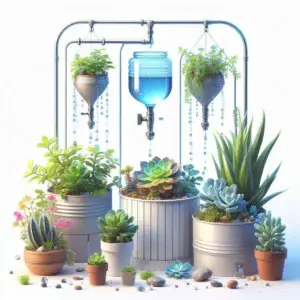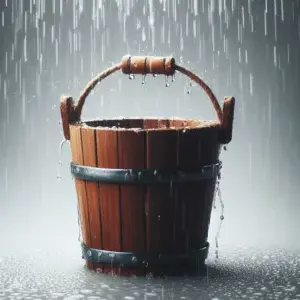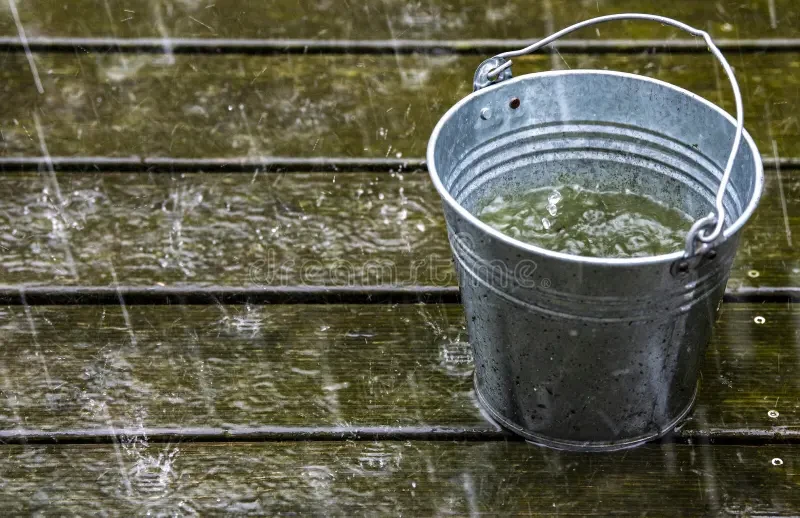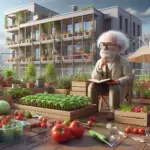 Living in the city often means dealing with limited resources, and water is one of them. With the increased demands urban areas face due to the growing population, water scarcity is a huge concern and is becoming a real challenge. Conserving water in urban gardening isn’t just an eco-friendly move it’s a necessity to ensure city life remains sustainable.
Living in the city often means dealing with limited resources, and water is one of them. With the increased demands urban areas face due to the growing population, water scarcity is a huge concern and is becoming a real challenge. Conserving water in urban gardening isn’t just an eco-friendly move it’s a necessity to ensure city life remains sustainable.
The environmental impacts of overusing water are extensive. When there’s excessive water use local resources can become depleted and place a strain on city infrastructures and can even lead to higher water bills. By adopting water-saving practices, gardeners can help combat these challenges while maintaining beautiful green spaces.
It’s not only about individual efforts. Collective action is also crucial. Encouraging your community to be more water-conscious can create a ripple effect, leading to larger-scale change. Community gardens can be a great place to start by including educational sessions on water conservation in their activities.
Every drop of water counts, and when you look at water as a precious resource, it shifts your approach to gardening altogether. Embracing the responsible use of water will not only make for a more sustainable garden but also contribute to a healthier urban environment for everyone.
Smart Irrigation Techniques: Efficient Ways to Water Your Garden
Watering smarter, not harder, can make a big difference in how much water you use in your city garden. Drip irrigation systems are a game-changer. These systems deliver water directly to the plant’s roots, minimizing waste. It’s like giving your plants a personal water bottle. For those into DIY, setting up a simple drip system isn’t hard and can save buckets of water.
The timing of your watering routine is also important. Early morning or late evening are the golden hours for watering. This approach limits evaporation, meaning more water actually reaches your plants roots. Get into the habit of checking the time before you water. Knowing you’re not wasting such a precious commodity as water resources feels good.
Soil moisture sensors are handy gadgets that remove the guesswork. They measure exactly how much moisture is in the soil, so you’re not watering by instinct or habit. Investing in one of these can help optimize your watering schedule, ensuring you never overdo or skimp on watering. These are amazing little tools for those spots in the garden that dry out quicker than others.
These smart techniques not only reduce water use but also often lead to healthier plants. Adopting these methods can improve your garden’s resilience during dry spells and contribute to a more sustainable lifestyle overall.
Choosing the Right Plants for Water-Efficient Gardening
In urban gardening, selecting the right plants can make a huge difference in your water consumption. Native plants are often your best bet. They’re adapted to the local climate and soil conditions, which usually means they’re more drought-tolerant than exotic varieties. They are one of the examples of nature lending you a hand in the garden.
Xeriscaping takes plant selection a step further by focusing on designing landscapes that require moderate to no irrigation. It’s about being strategic with your choices. Consider varieties like succulents or ornamental grasses that thrive in dry conditions. These plants not only save water, but they also offer unique textures and colors to your green space.
Companion planting is another trick up your sleeve. By placing plants together that naturally assist each other with nutrient and water needs, you can optimize your garden’s health. For example, pair thirsty plants with those that need less water to balance moisture needs across your plot.
Making informed choices about what you plant can significantly reduce the amount of water your garden requires. It’s sometimes a bit of a puzzle, fitting the pieces together to create a beautiful yet sustainable garden, but the rewards are worth it. Your efforts contribute to a vibrant, water-conscious urban landscape.
Innovative Water Harvesting Solutions

Urban gardeners have creative ways to make every drop count, and water harvesting is one of the most effective strategies. Rainwater harvesting systems can be as simple as setting up a barrel to catch runoff from your roof. This collected rainwater can be used to hydrate your plants without tapping into city water supplies. It’s important to check local regulations though, as some areas have rules about water collection.
Gray water systems are another nifty solution. They repurpose gently used water from your home, like what’s left from washing dishes or laundry (as long as you’re using biodegradable soaps), to water non-edible plants. This method doesn’t just save water; it also ensures less goes to waste.
Mulching and using ground covers are practical techniques that help preserve soil moisture. Mulch acts like a protective shield, keeping the soil cool and reducing evaporation. Ground covers, meanwhile, spread across soil surfaces, providing a living carpet that retains water and suppresses weeds. Both methods are simple and budget friendly.
Together, these ideas foster a garden that’s both thriving and mindful of water consumption. Every step toward water efficiency not only benefits your garden but plays a role in promoting a sustainable urban environment.




